|
UP
MIDDLE
DOWN
PDF
DOWNLOAD
CONTENTS
COVER

Editorial
Letter to the Editor
Cover Story
On the Road to Ratification
News Features
Half Widows and Orphans–A Way Forward in Islamic
Jurisprudence
Toward a Genuine Human Rights Movement of the
Victims of Human Rights Violations
The Five-Year Old Munir Case
Rights Cannot Die and Disappear
MIDDLE
Celebrating Human Rights Through Poetry and Music
UP
MIDDLE
DOWN
Voice from Thailand Calling for the Convention Now
The First Asian Conference on Psychosocial Work in
the Search for Enforced Disappeared Persons, in Exhumation Processes and the
Struggle for Justice and Truth
Missing Justice: Impunity and the Long Shadow of
War
On Latin America
Guatemala: First Steps to End Impunity
Human Rights Trials in Argentina
Reflections from the Secretariat
Initial Breakthroughs in India
The Power of Memory: A Reflection
Reclaiming our Dignity,Reasserting our Rights
UP
MIDDLE
DOWN
Press Release
Buried Evidence: Unknown,Unmarked Mass Graves in
Indian-Administered Kashmir, A Preliminary Report
Urgent Appeal
Review
Mrs. B: A Review
Minds Teasers
Crossword Puzzle
CryptoQuote
Literary Corner
Emptiness
AFAD MEMBER- ORGANIZATIONS
UP
MIDDLE
DOWN
|
ON LATIN AMERICA
Guatemala : First Steps to End Impunity Over 45,000 Cases of Enforced
Disappearance by
Atty. Gabriella Citroni

Introduction
From 1960 to 1996, Guatemala was ravaged by a bloody
internal armed conflict, which left almost 250,000 people arbitrarily
killed, around one million of refugees and internally displaced people
and 45,000 victims of enforced disappearance. The great majority of
victims belonged to the Mayan population.1
The conflict from which disappearances arose in
Guatemala began in the sixties when a small group of young army officers
rebelled against the military government, accusing it of corruption. The
rebellion was put down, and the young officers fled to the mountains of
eastern Guatemala where they began a guerrilla war. These guerrillas
soon turned into a Marxist movement (URNG – Unidad
Revolucionaria Nacional Guatemalteca) whose objective was to
overthrow the government and take power. It is important to highlight
that the Guatemalan armed conflict occurred in the framework of the Cold
War2. On 29 December 1996, the government and the URNG signed an
Agreement on a Firm and Lasting Peace.
3
The final report presented in 1999 by the Guatemalan
Truth Commission4 known as
"Commission for Historical Clarification" concluded that:
In Guatemala, forced disappearance was a systematic
practice which, in nearly all cases, was the result of intelligence
operations. The objective was to disarticulate the movements or
organizations identified by the State as favorable to the insurgency,
as well as to spread terror among the people. The victims of these
disappearances were peasants, social and student leaders, professors,
political leaders, members of religious communities and priests, and
even members of military or paramilitary organizations that fell under
the suspicion of collaborating with the enemy. Those responsible for
these forced disappearances violated fundamental human rights.5
[…] The ultimate scope of enforced disappearance of persons is the
destruction of something - an organization, the diffusion of a
political idea – using someone – the victim.6
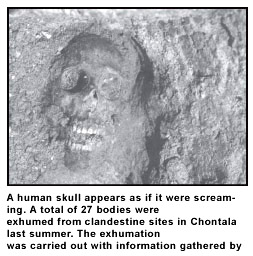 The
subject of enforced disappearances in Guatemala had been included in the
Comprehensive Agreement on Human Rights signed on 29 March 1994
7, under Commitment III,
Commitment against Impunity, in which the State undertook to promote the
legal amendments to the Criminal Code to describe enforced disappearance
as a crime of particular gravity. The Government likewise undertook to
support recognition in the international community of the definition of
systematic enforced disappearances as a crime against humanity. The
subject of enforced disappearances in Guatemala had been included in the
Comprehensive Agreement on Human Rights signed on 29 March 1994
7, under Commitment III,
Commitment against Impunity, in which the State undertook to promote the
legal amendments to the Criminal Code to describe enforced disappearance
as a crime of particular gravity. The Government likewise undertook to
support recognition in the international community of the definition of
systematic enforced disappearances as a crime against humanity.
On 14 July 1995, Legislative Decree 48-1995 was
enacted, whereby article 201-ter was added to the Criminal Code, thereby
criminalizing the conduct of enforced disappearance. Article 201-ter of
the Guatemalan Penal Code, as amended by Decree 33-96 of the Congress of
the Republic, approved on 22 May 1996, stipulates that:
[t]he crime of forced disappearance is committed by
anyone who, by order or with authorization or support of State
authorities, in any way deprives a person or persons of their liberty,
for political reasons, concealing their whereabouts, refusing to
reveal their fate or recognize their detention, as well as any public
official or employee, whether or not they are members of the State
security forces, who orders, authorizes, supports or acquiesces in
such actions.
The Criminal Code provides for a penalty of 25 to 40
years of imprisonment and, in the event of the death or serious physical
or psychological harm of the victim of enforced disappearance, capital
punishment is envisaged.8
Ongoing Impunity
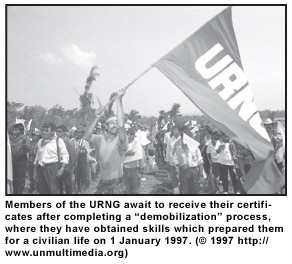 The
Inter-American Court of Human Rights rendered a number of judgments9
on cases of enforced disappearance that happened during the Guatemalan
armed conflict, where, besides declaring the international
responsibility of the State for the violation of various human rights
(right to life, right to humane treatment, right to personal liberty,
right to a fair trial and right to judicial protection), the Court
ordered the State, among other measures of reparation, to "exhaust all
the procedures necessary in order to guarantee, within a reasonable
period of time, the effective compliance of its duty to investigate,
prosecute, and, if it is the case, punish those responsible for the
facts […], as well as ensure the victims’ right to a fair trial"10.
The Court also added that "the result of the proceedings must be made
public, so that the Guatemalan society can know the truth"11. The
Inter-American Court of Human Rights rendered a number of judgments9
on cases of enforced disappearance that happened during the Guatemalan
armed conflict, where, besides declaring the international
responsibility of the State for the violation of various human rights
(right to life, right to humane treatment, right to personal liberty,
right to a fair trial and right to judicial protection), the Court
ordered the State, among other measures of reparation, to "exhaust all
the procedures necessary in order to guarantee, within a reasonable
period of time, the effective compliance of its duty to investigate,
prosecute, and, if it is the case, punish those responsible for the
facts […], as well as ensure the victims’ right to a fair trial"10.
The Court also added that "the result of the proceedings must be made
public, so that the Guatemalan society can know the truth"11.
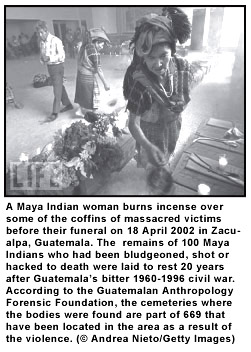 Nevertheless,
for almost 30 years, the majority of reported cases of enforced
disappearance during the armed conflict remained unsolved.
12 Since enforced disappearance was
codified as a separate crime under domestic penal law in 1996, the
mentioned provision remained dead letter for more than 10 years. In
fact, until 2007, there was not a single person arrested or tried for
the commission of the crime of enforced disappearance. Only two cases
made their way up to the stage of formulating an accusation. The two
cases referred to enforced disappearances which had occurred between
1981 and 1984. The defendants invoked the principle of non-retroactivity
of criminal law and claimed that they could not be charged with the
crime of enforced disappearance as Article 201-ter had been introduced
in the Criminal Code only in 1996 that is many years after the events.
The issue went to the Guatemalan Constitutional Court. Nevertheless,
for almost 30 years, the majority of reported cases of enforced
disappearance during the armed conflict remained unsolved.
12 Since enforced disappearance was
codified as a separate crime under domestic penal law in 1996, the
mentioned provision remained dead letter for more than 10 years. In
fact, until 2007, there was not a single person arrested or tried for
the commission of the crime of enforced disappearance. Only two cases
made their way up to the stage of formulating an accusation. The two
cases referred to enforced disappearances which had occurred between
1981 and 1984. The defendants invoked the principle of non-retroactivity
of criminal law and claimed that they could not be charged with the
crime of enforced disappearance as Article 201-ter had been introduced
in the Criminal Code only in 1996 that is many years after the events.
The issue went to the Guatemalan Constitutional Court.
The Judgment by the Constitutional Court
In a groundbreaking judgment of 7 July 2009, the
Guatemalan Constitutional Court found that, as the crime of enforced
disappearance is a continuing (or permanent) one, it lasts until the
fate and whereabouts of the disappeared person are established with
certainty.13 Accordingly,
there is no breach whatsoever of the principle of non-retroactivity of
criminal law: as long as the perpetrators do not disclose the fate and
whereabouts of the victim, the crime continues being committed,
regardless of when the deprivation of liberty of the disappeared person
originally occurred. The Court went on to find that in such cases, there
is no retroactive application of the law even if the conduct commenced
before the relevant article of the Criminal Code entered into force,
given that it continued after that date.
The decision has, for the first time, opened the door
to prosecutions for the tens of thousands of enforced disappearances in
Guatemala and to an end to the impunity that has reigned to date.
The first Two Convictions for Enforced Disappearance
In 2003, relatives of six people14
who were victims of enforced disappearance between 1983 and 1984 in the
Choatalum village, filed a complaint against the former military
commissioner Felipe Cusanero Coj, claiming that he was responsible for
the mentioned crimes. He was charged with the crime of enforced
disappearance as defined by Article 201-ter of the Criminal Code.
On 7 September 2009 the first conviction for enforced
disappearance was eventually passed: Felipe Cusanero Coj was sentenced
to 150 years jail (25 years of prison for every disappeared person).15
The sentence implied the immediate capture of Mr. Cusanero.
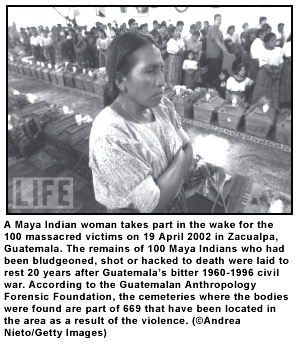 The
judgment reiterated the permanent nature of the crime, which the
Constitutional Court had already cleared up. Moreover, the judges based
their decision on the evidence presented by the attorney for the
government and the plaintiff. Amongst the pieces of evidence are the
testimonies of the relatives who witnessed the arbitrary deprivation of
liberty during those years; as well as forensic reports that proved the
existence of a military detachment in the place; the Guatemala Nunca
Más (Never Again) Report, the Memoria del Silencio (Memory of
Silence) Report; and reports of the Inter-American Commission on Human
Rights.16 The
judgment reiterated the permanent nature of the crime, which the
Constitutional Court had already cleared up. Moreover, the judges based
their decision on the evidence presented by the attorney for the
government and the plaintiff. Amongst the pieces of evidence are the
testimonies of the relatives who witnessed the arbitrary deprivation of
liberty during those years; as well as forensic reports that proved the
existence of a military detachment in the place; the Guatemala Nunca
Más (Never Again) Report, the Memoria del Silencio (Memory of
Silence) Report; and reports of the Inter-American Commission on Human
Rights.16
Finally, the judgment refers to further prosecution
proceedings that the public prosecutor shall institute, as names of two
other allegedly involved military officials emerged during the trial.
On 3 December 2009, another Guatemalan tribunal
handed down a second landmark judgment, sentencing Coronel Marco Antonio
Sánchez Samayoa and the 3 military commissioners José Domingo Ríos,
Gabriel Álvarez Ramos and Salomón Maldonado Ríos to 53 years in prison
for the enforced disappearance of 8 people17
perpetrated in 1981 in the village of El Jute.18
Coronel Sánchez Samayoa, who was the Commander of the
Military Zone of Zacapa, is the first high-ranking member of the
military convicted for enforced disappearance committed during the
internal armed conflict: the prosecutors successfully proved that, given
his position and functions, he was aware of counter-insurgency
activities carried out against suspected members of the guerrilla,
including the disappearance of the 8 victims in the case.
This judgment is particularly important also because,
in order to bring the case to trial, prosecutors and representatives of
the victims successfully challenged a Court of Appeals decision of 2006,
in which Coronel Sánchez Samayoa was granted an amnesty under the 1996
National Reconciliation Law. After a long legal battle, that decision
was overturned, following a Constitutional Court ruling which recognised
that certain crimes, including enforced disappearance, are excluded from
the ambit of the law.19
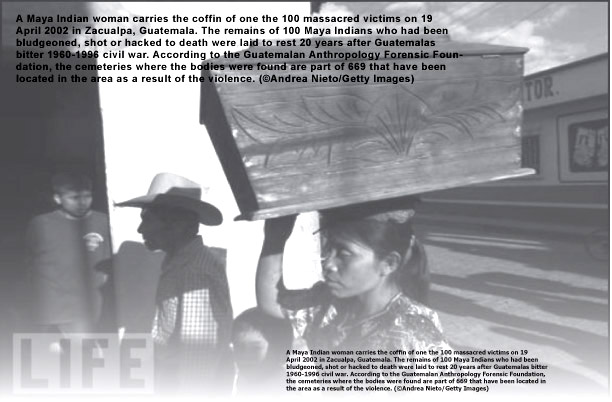
The judgment also orders to the public prosecutor to
initiate an investigation against the former Ministry of the Defence
Ángel Aníbal Guevara; the former Chief of Staff for the Defense
Benedicto Lucas García; and other military personnel in service in the
military base of Zacapa in 1981. Indeed, the judgment of December 2009
concretely opens the door to other significant results in the struggle
against impunity. In fact, this historical achievement has not been
welcomed by everyone: both the lawyers who represented the relatives of
the disappeared people and the relatives themselves have been subjected
to a harsh campaign of threats and harassment and are currently under a
special regime of protection.
Conclusions
The judgments delivered after almost 30 years of
impunity by Guatemalan tribunals as well as by the Constitutional Court
provide a ray of hope for the families of the 45,000 victims of enforced
disappearance from the internal armed conflict, and set important
precedents for prosecutors and judges to rely on in future cases to be
brought before the courts, not only in Guatemala, but in all those
countries where cases of enforced disappearance have occurred.
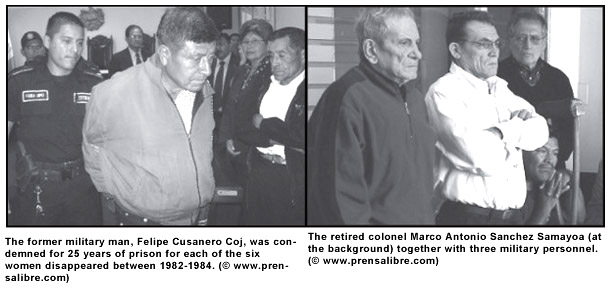
In fact, as a result of the continuing nature of the
crime of enforced disappearance, those responsible for the crime can and
must be subjected to legal proceedings and sanctions even if the law
creating the separate crime of enforced disappearance is adopted after
the initial act causing the disappearance, or if after the enactment of
the law, the fate and whereabouts of the victim would continue to remain
unknown.
It is still a long road towards accountability for
these heinous crimes, but the Guatemalan experience shows that, even if
it may take many years, impunity can eventually be defeated by truth and
justice.

1 In its final
report, the Truth Commission for Guatemala (Commission for Historical
Clarification - CEH) concluded that in the context of the Guatemalan
armed conflict acts of genocide were committed against members of Maya-Ixil,
Maya-Achí, Maya-K’iché, Maya-Chuj and Maya- Q’anjob’al peoples. See
Final Report of the CEH, Guatemala: Memory of Silence, Guatemala,
1999, Tome III, pp. 316-318, 358, 375-376, 393, 410, 416-423.
2 United Nations Working Group on
Enforced or Involuntary Disappearance (UNWGEID), Report on the
Mission to Guatemala, doc. A/HRC/4/41 of 20 February 2007, para. 9.
In 1987 the UNWGEID had carried out another mission to the country: see
doc. E/CN.4/1988/19/Add.1 of 21 December 1987.
3 The text is available at: http://www.c-r.org/our-work/accord/guatemala/firm-lasting-peace.
php.
4 While the Commission for Historical
Clarification was carrying out its mandate, a similar initiative was
undertaken also by the Guatemalan Archbishop. For the final report of
this other Truth Commission, see Archibishop of Guatemala, Human Rights
Office, Guatemala: Never Again - Report of the Inter-diocesan Project of
Recovery of Historical Memory, Guatemala City, 1998.
5 CEH, Guatemala: Memory of
Silence, supra note 1, "Conclusions", chap. IV, para. 89.
6 Ibid., para. 2061.
7 The text is available at: http://www.c-r.org/our-work/accord/guatemal/human-rights
agreement.php.
8 On the compatibility of the
Guatemalan Criminal law on enforced disappearance with international
human rights law, see UNWGEID, Report on the Mission to Guatemala,
supra note 2, paras. 28-34 and 99.
9 Inter-American Court of Human
Rights (IACHR), Case Blake v. Guatemala, judgment of 24
January 1998; Case Bámaca Velásquez v. Guatemala, judgment
of 25 November 2000; Case Molina Theissen v. Guatemala,
judgment of 4 May 2004; and Case Tiu Tojín v. Guatemala,
judgment of 26 November 2008.
10 IACHR, Case Tiu Tojín, supra
note 9, para. 72.
11 Ibid.
12 See, inter alia, Inter-American
Commission on Human Rights, Justice and Social Inclusion: the Challenges
of Democracy in Guatemala, OEA/Ser.L/V/II.118 Doc.5 rev.1, 29 December
2003.
13 Constitutional Court of
Guatemala, judgment of 7 July 2009. See also, inter alia,
Constitutional Section of the Supreme Tribunal of Justice of the
Bolivarian Republic of Venezuela, judgment of 10 August 2007; Supreme
Court of Justice of Peru, judgment of 20 March 2006 (Exp. 111-04, D.D.
Cayo Rivera Schreiber); Constitutional Court of Peru, judgment of 18
March 2004 (Exp. 2488-2002-HC/TC), para. 26; Supreme Court of Justice of
Mexico, judgment of 20 July 2004 (P./J.49/2004); Constitutional Court of
Peru, judgment of 9 December 2004 (Exp. 2798-04-HC/TC), para. 22; and
Constitutional Court of Colombia, judgment of 31 July 2002 (No.
C-580/02).
14 Lorenzo Ávila, Alejo Culajay Ic,
Filomena López Chajchaguin, Encarnación López López, Santiago Sutuj and
Mario Augusto Tay Cajt.
15 Tribunal for Criminal Act,
Narco-activity and Crimes against the Environment of the region of
Chimaltenango, Judgment No. C-26-2-2006, Of. III, 7 September 2009.
16 Inter-American Commission on
Human Rights, Report on the Human Rights Situation of Human Rights in
the Republic of Guatemala, doc. OEA/Ser.L/V/II.53 Doc. 21 rev. 2 of
13 October 1981 (Chapter II, Missing Persons); and doc. OEA/Ser.L/V/II.61
Doc. 47 of 3 October 1983 (Chapter III, Abductions and Disappearances).
17 Jacobo Crisóstomo Chegüen, Miguel
Ángel Chegüen Crisóstomo, Raúl Chegüen, Inocente Gallardo, Antolín
Gallardo Rivera, Valentín Gallardo Rivera, Antolín Gallardo Rivera and
Santiago Gallardo Rivera.
18 Tribunal of Chiquimula (Tribunal
Primero de Sentencia), judgment of 3 December 2009. More precisely, the
accused were sentenced to 40 years of imprisonment for enforced
disappearance and to 13 years and 4 months of imprisonment for illegal
deprivation of liberty.
19 Constitutional Court of
Guatemala, judgment of 23 December 2008. See ttp://www.
impunitywatch.org/en/publication/36.
Ph.D. Gabriella Citroni is
Researcher in International Law and Professor of International Human
Rights Law at the University of Milano-Bicocca (Italy) as well as
international legal advisor of the Latin American Federation of
Associations of Relatives of Disappeared People (FEDEFAM).
VOICE March 2010
UP
MIDDLE
DOWN
|


 The
subject of enforced disappearances in Guatemala had been included in the
Comprehensive Agreement on Human Rights signed on 29 March 1994
The
subject of enforced disappearances in Guatemala had been included in the
Comprehensive Agreement on Human Rights signed on 29 March 1994
 The
Inter-American Court of Human Rights rendered a number of judgments
The
Inter-American Court of Human Rights rendered a number of judgments Nevertheless,
for almost 30 years, the majority of reported cases of enforced
disappearance during the armed conflict remained unsolved.
Nevertheless,
for almost 30 years, the majority of reported cases of enforced
disappearance during the armed conflict remained unsolved.  The
judgment reiterated the permanent nature of the crime, which the
Constitutional Court had already cleared up. Moreover, the judges based
their decision on the evidence presented by the attorney for the
government and the plaintiff. Amongst the pieces of evidence are the
testimonies of the relatives who witnessed the arbitrary deprivation of
liberty during those years; as well as forensic reports that proved the
existence of a military detachment in the place; the Guatemala Nunca
Más (Never Again) Report, the Memoria del Silencio (Memory of
Silence) Report; and reports of the Inter-American Commission on Human
Rights.
The
judgment reiterated the permanent nature of the crime, which the
Constitutional Court had already cleared up. Moreover, the judges based
their decision on the evidence presented by the attorney for the
government and the plaintiff. Amongst the pieces of evidence are the
testimonies of the relatives who witnessed the arbitrary deprivation of
liberty during those years; as well as forensic reports that proved the
existence of a military detachment in the place; the Guatemala Nunca
Más (Never Again) Report, the Memoria del Silencio (Memory of
Silence) Report; and reports of the Inter-American Commission on Human
Rights.
